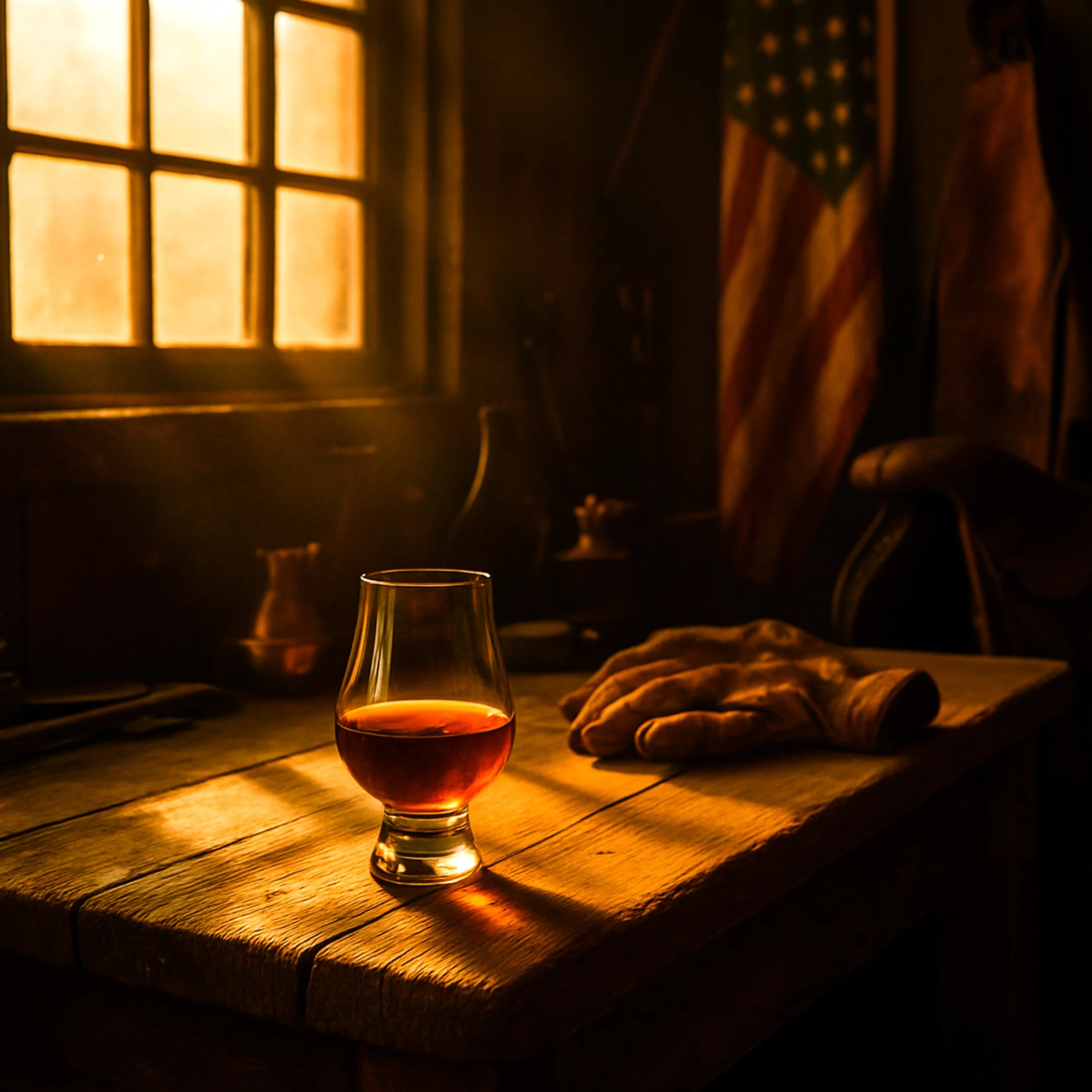AMERICAN WHISKEY
Diverse by Design, Rooted in Innovation
American whiskey is a broad and dynamic category that goes far beyond bourbon and rye. From Tennessee to Texas, from classic corn whiskey to experimental grain blends and barrel finishes, American distillers continue to push boundaries while honoring deep-rooted traditions. Defined by variety and driven by creativity, American whiskey reflects both heritage and reinvention—often in the same bottle.
Key Characteristics
Champagne offers bright acidity, fine bubbles, and a layered palate ranging from citrus and apple to brioche, Unlike bourbon or rye, American whiskey doesn’t follow a single grain or production formula. It encompasses a wide range of styles, often defined by mash bill, aging process, or regional technique. The result: whiskeys that span from sweet and mellow to spicy, smoky, or bold, each with a distinct American signature.
Style
Corn whiskey, Tennessee whiskey, blended American whiskey, wheat whiskey, malt whiskey, experimental and specialty styles
Body
Light to full, depending on style
Texture
Ranging from soft and smooth to bold and robust
Primary Grains
Corn, wheat, rye, malted barley, millet, oats, and emerging heirloom or regional grains
Typical Flavors
Caramel, vanilla, grain cereal, toasted oak, dried fruit, nuts, spice, chocolate, smoke (depending on style)
Origin & History
America's whiskey history is older than the country itself, starting with early settlers distilling corn and rye along the frontier. While bourbon and rye became the most iconic styles, other forms of whiskey flourished in regions like Tennessee, where filtering techniques created a mellower spirit, and Appalachia, where unaged corn whiskey—also known as “white dog” or “moonshine”—was part of local culture. Today, American whiskey is defined by its innovation, with craft distillers exploring everything from smoked malts to hybrid grain mash bills and experimental barrel aging.
How It’s Made
There is no single method for American whiskey. While many are aged in new charred oak barrels (like bourbon and rye), others—such as corn whiskey—may be aged in used barrels or not aged at all. Tennessee whiskey is made like bourbon but filtered through sugar maple charcoal in a process called the Lincoln County Process. American single malts (a growing category) use 100% malted barley and take cues from both Scotch and craft beer traditions.
Notable Styles
American whiskey includes both traditional and emerging subcategories.
Tennessee Whiskey
Like bourbon, but charcoal-filtered; smooth and mellow
Corn Whiskey
At least 80% corn; can be unaged or lightly aged in used barrels
American Malt Whiskey
Made from 100% malted barley; rich, often with nutty or roasted notes
Blended American Whiskey
Mix of straight whiskey and neutral spirit or light whiskey
Wheat Whiskey
At least 51% wheat; soft, gentle, often with pastry or floral tones
Experimental/Craft Styles
Smoke-kissed, heirloom grain, wine-cask finished, or hybrid mash bills
Cocktail Pairings
American whiskey’s stylistic range makes it a bartender’s playground—capable of anchoring everything from easy highballs to complex, layered drinks.
Classic Cocktails
Whiskey Sour, Old Fashioned, Manhattan, Lynchburg Lemonade, Gold Rush
Modern Mixes
Maple Cinnamon Old Fashioned, Cherry Bark Smash, Malted Boulevardier, Smoked Peach Highball
Food Pairings
From barbecue to baked goods, American whiskey plays well with bold, sweet-savory, and smoky dishes.
With Savory
Grilled pork chops, BBQ chicken, cornbread, chili, fried green tomatoes
With Cheese
Smoked cheddar, gouda, Monterey Jack, blue cheese
With Dessert
Banana bread, spiced donuts, pecan pie, chocolate chip cookies
How to Serve It
Glassware
Tumbler, Glencairn, or cocktail-specific glass depending on the serve
Temperature
Room temperature for sipping; on the rocks or mixed for casual or lighter styles
Storage
Store upright, sealed tightly, in a cool, dark place. Open bottles remain stable for years.
Fun Fact
Corn whiskey is the only American whiskey that can legally skip barrel aging altogether—and when unaged, it’s the closest legal expression of traditional “moonshine.”
Try This If You Like
Unpeated Scotch
Recommended Producers
These houses exemplify the diversity and craftsmanship of American whiskey, from classic Kentucky bourbons to bold, innovative blends and regional standouts.
Basil Hayden’s
A refined member of the Beam family, known for its light-bodied bourbon that balances spice and sweetness with effortless drinkability.
Buffalo Trace
One of Kentucky’s most celebrated distilleries, crafting richly layered bourbons that offer consistency, complexity, and broad appeal.
Garrison Brothers
A trailblazer in Texas bourbon, producing robust, high-proof whiskies with intense flavor shaped by the state’s extreme climate.
High West Distillery
A creative force in American whiskey, blending tradition with innovation in expressions like Campfire, which uniquely marries bourbon, rye, and peated Scotch.
Recommended Pours
Basil Hayden's - Kentucky Straight Bourbon Whiskey — A light and approachable bourbon with gentle spice, caramel, and a smooth, easy-drinking finish.
Buffalo Trace - Kentucky Straight Bourbon Whiskey — A well-balanced bourbon offering notes of vanilla, toffee, and oak with a rich, crowd-pleasing character.
Garrison Brothers - Texas Straight Bourbon Whiskey — A bold and full-bodied bourbon from Texas, featuring deep caramel, charred oak, and a signature heat.
High West Distillery - Campfire — A unique blend of bourbon, rye, and peated Scotch, delivering a smoky-sweet profile with layers of spice, honey, and oak.





